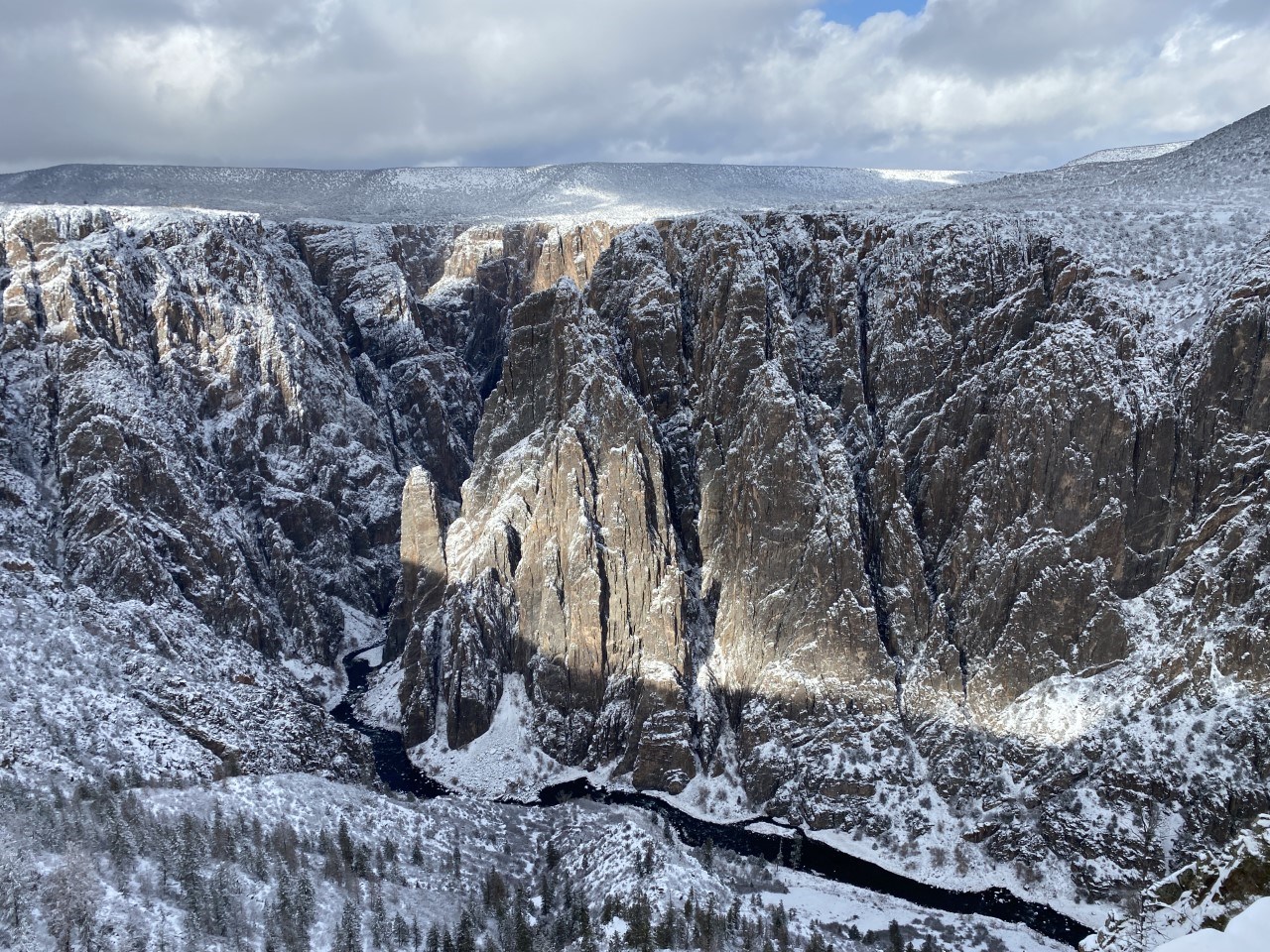Last updated: December 17, 2024
Article
Bryant Expedition - 1883

NPS
A Winter Expedition
The Denver and Rio Grande Western Railroad was rapidly pushing its tracks from eastern Colorado, over the Rocky Mountains, and through the Black Canyon on its way to Salt Lake City. The line reached Cimarron at a natural break in the cliffs of the canyon, and the engineers had a decision to make. One choice was to continue the tracks down the canyon and the town of Delta. The other was to take them over Cerro Summit and into Montrose. To better make the decision, the company called Byron Bryant to conduct a survey. His task was to figure out whether a line could be constructed through the middle and lower portions of the canyon and its overall cost.
Byron Bryant oversaw the 150 mile "Uncompahgre Extension" of the railroad in 1881 and 1882. He received a telegram in December to explore the "Grand Canyon of the Gunnison," as it was known then, from Cimarron to Delta. He immediately began preparations and hired a crew to accomplish the canyon survey. Charles Hall led the pack train.
They left on December 12, 1883, working their way along the north rim of Black Canyon. Bryant rode the train to Cimarron and made his way downstream to meet the surveyors in the canyon. They ran a survey line down the canyon from Cimarron, expecting to be done in 20 days. Every morning, they would climb down into the canyon 2,000 to 2,500 feet (610 to 762 m). When camped on the Crystal River, they scrambled 2,800 feet (853 m).This scramble in the snow would take two to three hours each way, leaving perhaps six hours of work at the river in the shortened days of winter. It was arduous work, hopping from ice flow to ice flow. The crew risked wounds and injury, and this deterred most of the laborers. When the party took a break to move the camp to the south rim, all but three of the original surveyors and Hall, quit.
Seeing a Different Canyon
As the days dragged into weeks, the small crew drew closer to each other and to the canyon. One of the crew, transitman Harvey Wright, talked in his sleep, dreaming out the situations that impressed his imagination. Wright later wrote sharing his impressions of the beauties of the canyon:"For some distance... we had noticed almost a perfect reproduction of the 'Goddess of Liberty,' and depicted on the silver dollars caused by feldspar seams in the darker rocks. The figure was colossal and was seated on her throne about two thousand feet above the river."
"Hereto was unfolded view after view of the most wonderful, the most thrilling of rock exposures, one vanishing from view only to be replaced by another still more imposing. A view which could easily be made into a Scottish Feudal Castle would be followed by another suggesting the wildest parts of... imposing height and majestic proportions."
Finishing the Work
They continued working and finished the survey in March 1884. The report to the company suggested that it would be a terrible financial decision to take the tracks further down the canyon. The railroad would never continue farther than Cimarron into Black Canyon.
